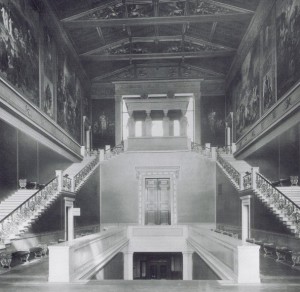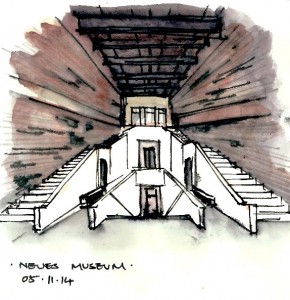Good architects should all be conservationists. As architects, we understand the vital importance of context. Unlike artists, architects never initiate a design process with a blank canvas. Good design is always informed. Architecture is possibly the only profession that create its own problems and solutions.
To clarify, conservation does not necessarily require a conservative approach. To take a conservationist approach is to first recognise the existing value, past value, then to try and preserve those values whilst making appropriate additions to create future value.
Let’s begin with recognition. What do we mean by value? How does anyone identify something worth protecting? The answer may be found in the, somewhat snobbish, words of John Ruskin, “Any work, over which educated, artistic people would think it worthwhile to argue at all”. Today, we may expand on this notion by including disciplines other than cultural, to include social and environmental aspects as well. Much like Max Dvorak’s “conservation not restoration”, Ruskin makes a clear distinction between restoration and repair. In the views of Ruskin, to restore is not only destructive, but it is completely impossible. For any new rendition, no matter how accurate, ‘is a false description of the thing destroyed’. To Ruskin, value extends beyond form to the very matter which created form itself; new stones do not equate to the work of old craftsman.
This conservative approach is not always practical however, as in the case of the Neues Museum, Berlin. Cue sensitive conservation. The aftermath of WWII and soviet occupation left the building in ruins and not much to be conserved. David Chipperfied recognised the past value of the very matter that made up the ruin itself and the current value of the wrecked form of the former building as a reminder of the historical event of war. He also recognised the future value in restoring the building for use by the general public as a museum once again. The building was sensitively restored. Instead of a complete restoration, the new elements were muted interpretations of the original. This way the building managed to maintain the scars from war as well as embracing restored volume.
But what if none of the original building envelope exists?
In July 1902, San Marco Campanile, Venice, collapsed completely. The decision was taken to entirely rebuild the tower using the same materials and method as prior to the incident. The justification in this case is that the symbolic value of the bell tower is integral to the identity of St Mark’s and the square which cannot be sensibly represented in the form of the rubble that remained, thus it had to be rebuilt. In fact this is not the first time that the Campanile has been restored. It went through multiple restorations to finally resume its current shape in 1511 with minor alterations up until then. The tower today is able to symbolically retain its past even if it may not be physically authentic.
In one example, symbolical value is placed above physical value. Ise Grand Shrine, Japan, is rebuilt every twenty years alternating between two sites. While on the surface, this may seem to be counter intuitive when it comes to conservation. However, the rebuilding serves as a way of passing building techniques from one generation to the next. The shrine is rebuilt with exactly the same materials, dimensions and methodology. Matter is not conserved here but cultural, historical and social heritage are definitely preserved.
Today we must recognise the importance of the existing cultural, historical, social and environmental heritage. Architects mustn’t brashly design for tomorrow without any regards for the past. Equally it seems irresponsible not to contribute anything for future generations. We must take responsibility for our legacy and do so by being good conservationists.
By Aut Angpanitcharoen, Stage 3


